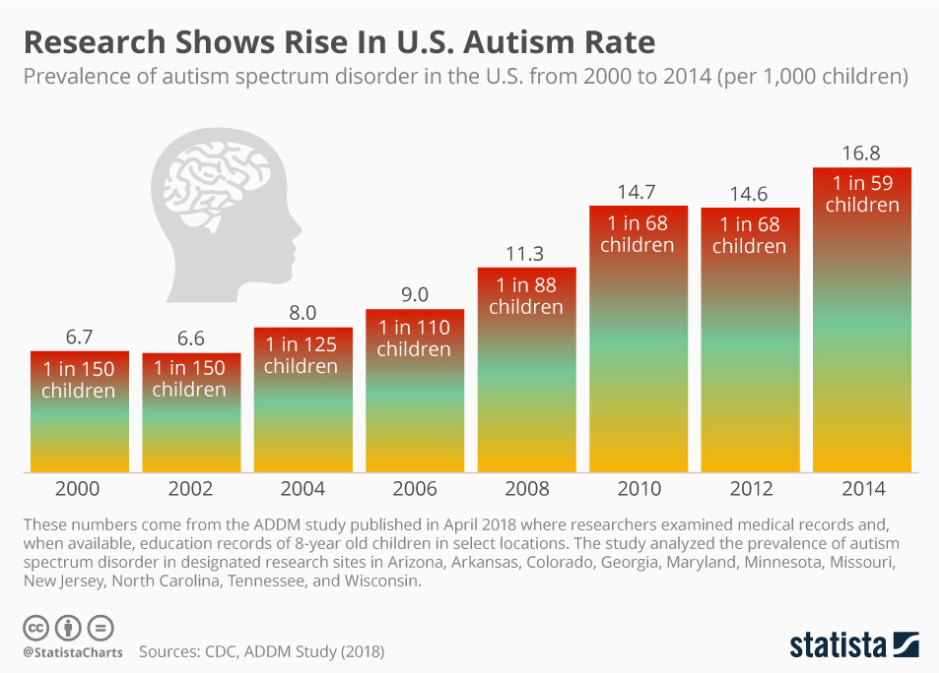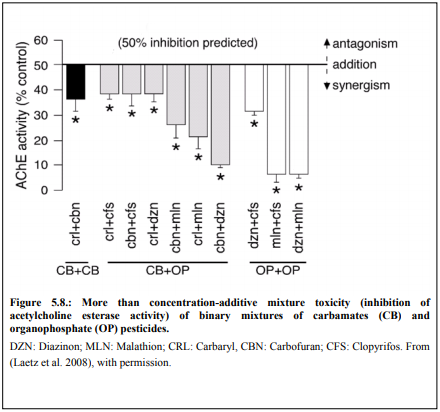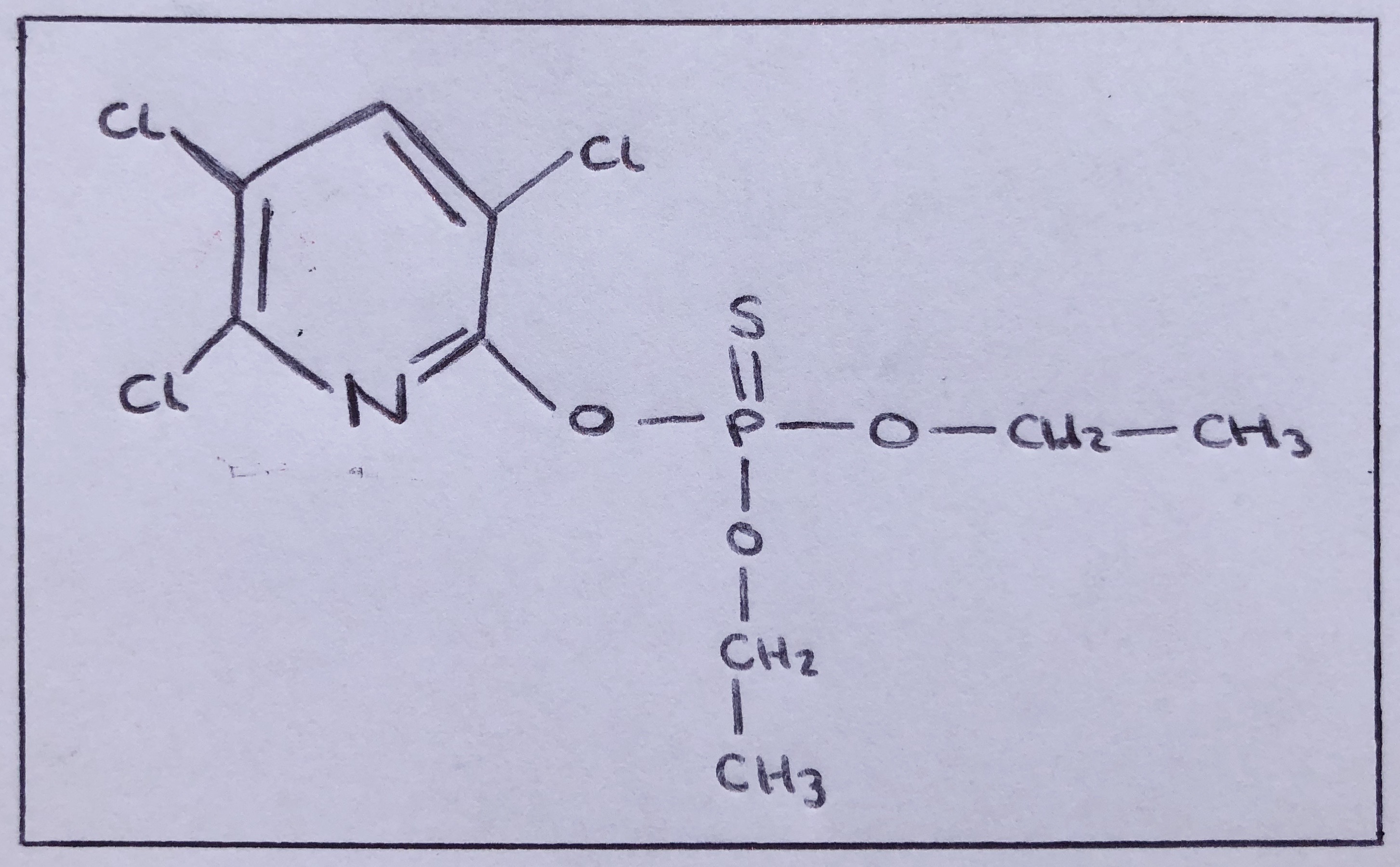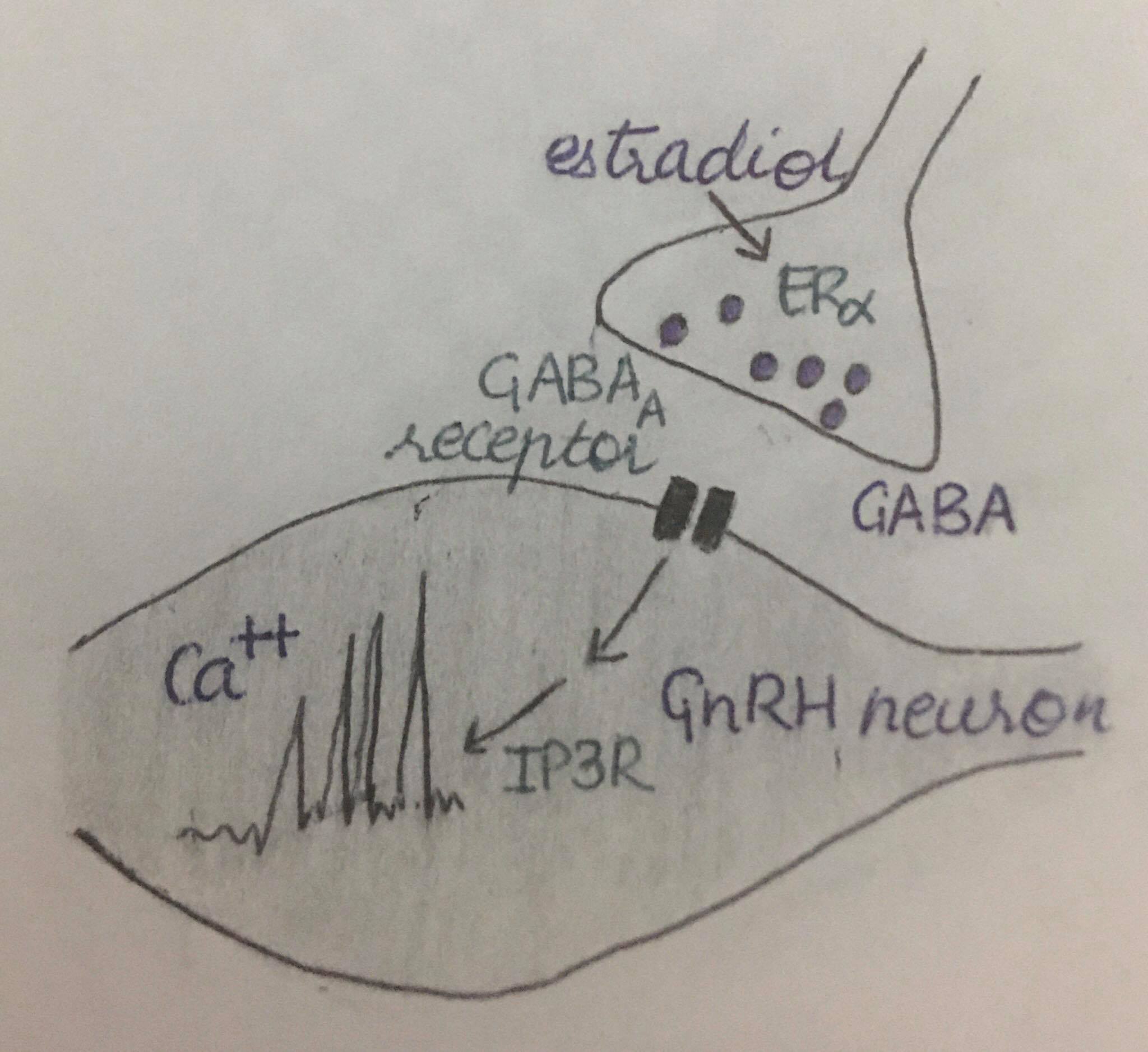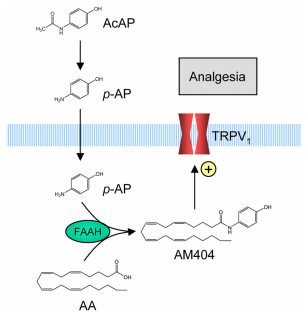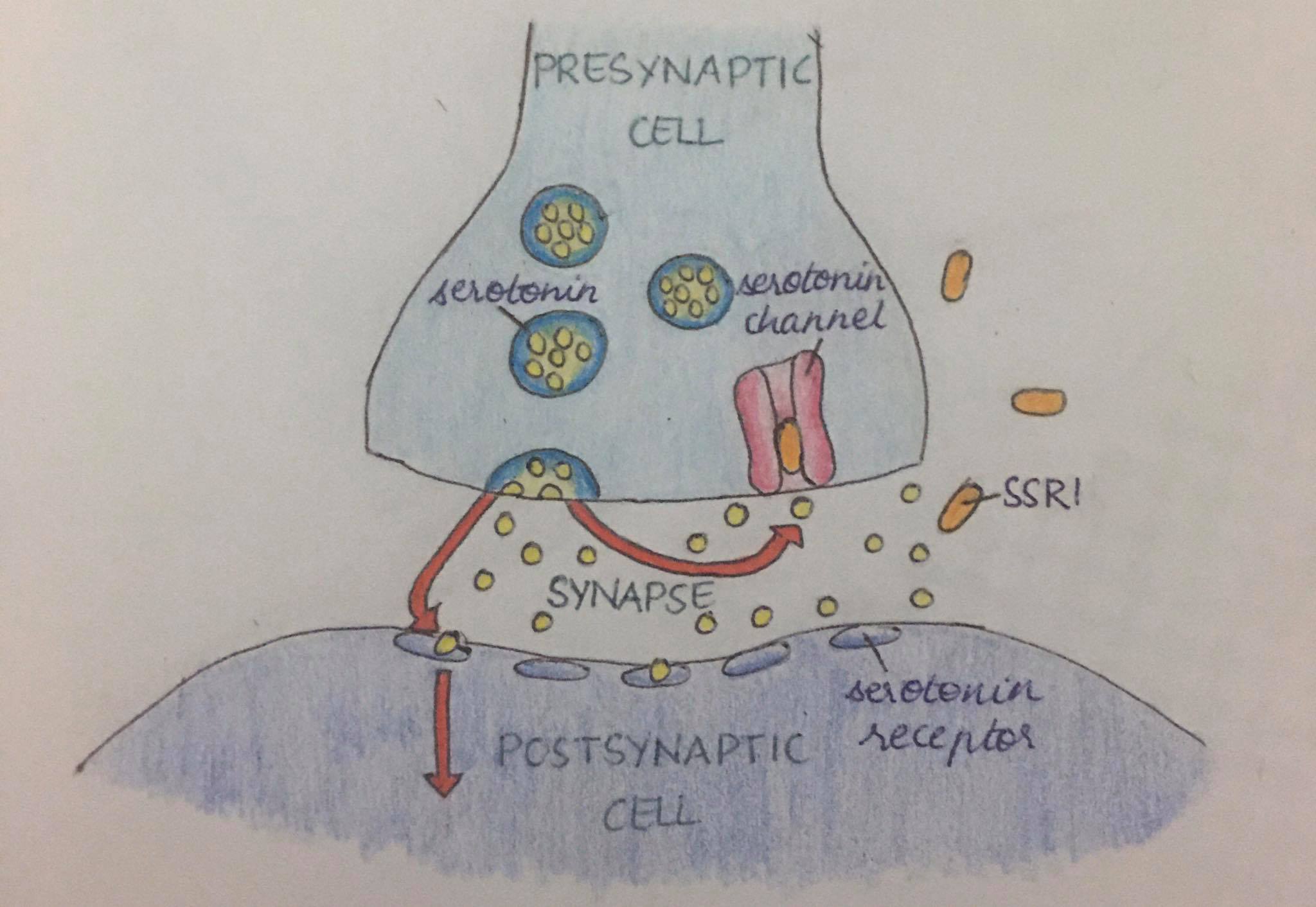Itt írjon a(z) ED_autism_en-ról/ről
Endocrine Disruptors inducing Autism
Contents
Introduction
Endocrine disrupting chemicals (EDCs) are those that disrupt the finely tuned endocrine system both in utero and in later life having negative effects on neurological development. Autism or autism spectrum disorders (ASD), are a variety of conditions characterised by abnormalities in communication, social interactions and stereotypic, repetitive behaviours (Edelson et al, 2009). They are often accompanied by other medical conditions such as epilepsy and mental health conditions ranging from anxiety and depression to attention deficits and are found to affect men four times more frequently than women (Mari-Bauset et al, 2018). As shown in Figure 1, the number of cases of ASD have been increasing year by year and investigation into causes other than genetics and heritability is under intensive research. Such data, as well as extensive studies like with clinically diagnosed twins has initiated the narrative that non-shared environmental factors definitely come into play in the development of the disorder, with 73% of the twins having greatly varying scores on a social behavior test (Autism Speaks, 2020). With the rapid development of pesticides, plastics and medications, exposure to endocrine disruptors is believed to be one of those factors.
|
Figure 1 Rate of autism increase from 2000 to 2014 |
Plastics
Bisphenol A
Bisphenol_A (BPA) is one of the most commonly found environmental toxicants in everyday objects. It is used to produce plastic goods such as epoxy resins in food containers and water flasks. At high temperatures, food and drink easily absorb BPA from their containers. More than 10 million tons of BPA are produced every year, and over 100 tons are leaked into the atmosphere. It is taken up by humans through ingestion, inhalation or absorption through the skin.
It acts as an endocrine-disrupting chemical by affecting the normal thyroid hormone signaling and regulation. It does this mainly by interfering with iodine uptake (Wu et al, 2016), and with thyroid-specific gene expression. The effect of BPA on the thyroid is more serious when the hormone is in high demand such as in pregnant women, and thus even a mild dysfunction may have developmental consequences on the fetus and especially its brain (Korevaar et al, 2017). In the investigation of the association of urinary BPA concentrations with the thyroid function during pregnancy, the results showed that higher exposure to BPA associates with lower total T4, and a lower Free and total T4/T3 ratio. Several other experiments have shown gene expression associated with thyroid hormone including different types of deiodinase is affected by BPA (Xu et al, 2019). In an animal study performed on a rat, it showed that BPA is a noncompetitive inhibitor of sodium/ iodide symporter(NIS). This inhibition causes a lower iodine uptake by the thyroid and so T3 would be secreted in a higher amount than T4, which explains the difference in T4/T3 ratio (Larsen and Zavacki, 2012). Research shows that mothers with severe hypothyroxinemia is associated with the increased odds of having an autistic child. Infants born with very low fT4 had an increased risk of autism (Hoshiko et al, 2011). Based on animal models, even a mild deficiency of free maternal thyroxine during early pregnancy even if for a short period, could lead to abnormalities in the development of the cortical region of the brain of the progeny (Lavado‐Autric et al, 2003).
Thyroid hormone controls reelin and DAB1 genes that play an important role in lamination and neuronal migration during brain development (Alvarez et al, 1999). In vivo treatment of hypothyroid rats showed that the thyroid hormone increases the reelin expression. Furthermore, postmortem analysis of an autistic cerebellum showed that reelin is involved in the pathology of autism. Reduced reelin protein and DAB1 mRNA exhibited impairments in the reelin signaling system in autism, explaining the cognitive deficits that are present in this disorder (Fatemi et al, 2002).
BPA has the capability to act as a ligand for steroid hormone receptors in particularly estrogen and thus can be classified as a xenoestrogen. The estrogen promoting effects of BPA during gestation are more severe in developing fetus than compared to an adult. It could be a direct cause of increased estrogen levels in the womb. The estrogenic environment could limit cellular reproduction and synapse formation in the developing brain. Evidence shows that high levels of estrogen hormones in the womb raise the risk of autism. Researchers compared levels of 4 estrogen-like hormones (prenatal estriol, estradiol, estrone, and estrone sulphate) in the amniotic fluid of infants who did and did not have autism, and found a strong relationship of the increased hormone levels to autism. (Baron-Cohen et al, 2019; The Endocrine Society, 2018).
Phthalates
Phthalates are another commonly found industrial chemical in plastic products. They are transferred to humans through the same routes as BPA. They are endocrine disruptors that interfere with neurodevelopment. Once the phthalates are absorbed, they are quickly metabolized to monoesters, and the high-molecular-weight monoesters can undergo further oxidation to form oxidative metabolites. Increased concentration of primary and secondary metabolites in urine were detected in children with ASD which showed an association between phthalates and autism. Other researches showed this linkage to autism is mainly in boys but not girls. They impact the thyroid function and decrease the androgen hormones produced during pregnancy that are important for the development of the fetus. Phthalates may distrupt the testosterone levels in boys, which could be a possible explanation for the prevalence of autism in boys (Stephanie et al, 2010; Testa et al, 2012).
Insecticides and Herbicides
Organophosphates
Organophosphates are primarily used in insecticides and pesticides but are also the main component of nerve gas, used because of their neurotoxic effect. Since they can cross both the placenta and blood-brain barrier, they are associated with many developmental conditions (Adeyinka et Pierre, 2020). As shown in Figure 2, Organophosphates act as irreversible inhibitors of acetylcholinesterase, an enzyme that breaks down acetylcholine (ACh) into acetic acid and choline. Inhibition causes ACh to accumulate and disrupt synaptogenesis, axonogenesis and other neurological processes. Disruption of these processes is highlighted in the development of autism. Studies have also linked organophosphates to the down-regulation of serotonin receptors and to the dyshomeostasis of calcium and potassium (Philippat et al, 2018).
|
Figure 2 Acetlycholine Esterase inhibition by Organophosphates |
|
Figure 3 Chemical structure of Chlorpyrifos |
Chlorpyrifos, affects both the central and peripheral nervous system. It also inhibits acetylcholinesterase causing hyperstimulation of ACh receptors. It affects the transcription factors involved in neuron replication and differentiation, contributes to stunted axon growth and a thinning of the cerebral cortex. Gestational exposure shows significant links to lowered scores in the Mental and Psychomotor Development Index and greater incidence of attention deficits. It also lowers IQ scores and can impair memory. Chlorpyrifos exposure also more severely affects male children which is interesting given the sex difference associated with Autism (Lan et al, 2017).
Phytoestrogens
Soy contains high concentrations of the phytoestrogen genistein which blocks thyroxine synthesis and tyrosine iodination. Thyroid hormones are important in neuron differentiation, synaptogenesis and axon myelination, all processes linked to autism development (Patisaul, 2016). Phytoestrogens also affect oestrogen receptors and oestrogen mediated pathways. Oestrogen receptors in the brain regulate apoptosis, synaptogenesis and neuronal differentiation. Estrogen is therefore very important in normal neuronal development (Sumien et al, 2013). There are two estrogen receptors in the body. Alpha receptors regulate the reproductive functions whereas beta receptors are involved in anxiety, memory and learning. Beta receptors are concentrated within the cortex and are bound by phytoestrogens.
Autism is linked to epilepsy in children. Recently, soy-based foods have been shown to lower the seizure thresholds in children. The most well known genetic cause of ASD is Fragile X syndrome - an X-linked condition causing learning disabilities affecting males more severely than females. It is believed that the effects of underlying genetic mutations and conditions that lower the seizure threshold (eg. Fragile X syndrome) may be enhanced by the ingestion of high concentrations of phytoestrogens (Westmark, 2014).
Autism affects boys four times more frequently than girls (Mari-Bauset et al, 2018) . In gestation, fetuses exposed to higher testosterone concentrations have an increased likelihood of developing autism because of the effect testosterones has on cognition. Aromatase is an important enzyme that irreversibly converts androgens (eg. testosterone) to estrogen. It is involved in neurogenesis, neuroprotection and the pathophysiology of autism spectrum disorders. Flavone and isoflavone phytoestrogens act as competitive inhibitors. They bind to the enzyme's active site, blocking the substrate's ability to bind. Phytoestrogens also act on a molecular level to decrease aromatase gene expression, preventing the enzymes production. With less aromatase synthesized, and the aromatase present inhibited, less testosterone is converted to estrogen. This could both affect the development of autism and partly account for gender imbalance (Lephart, 2015).
Dichlorodiphenyltrichloroethane (DDT)
|
Figure 4 Estradiol and GABA activity enhancement leading to Ca2+ transients in an IP3R-dependent way |
This pesticide was once a popular choice for countering insects in agricultural fields, however in the 1970s was found to be non-biodegradable, detrimental to the environment and was banned in the US. Exposure is widespread as DDT can enter our food chain as well as be absorbed by coming in contact with contaminated products. Furthermore, DDT along with its metabolite dichlorodiphenyldichloroethylene (DDE) can be taken up by a foetus from the womb (CDC, 2009) as the placenta has proved to not be a plausible barrier to such EDCs, allowing for them to cross to the fetus at about week 5 of embryonic life with ease (Mari-Bauset et al, 2018).
DDT has been known to bind to estrogen receptors and imitate the main endogenous estrogens – estriol, estradiol, estrone and estrone sulphate. (Frigo et al, 2002). Estrogens are crucial in the developments of many aspects of the brains of both sexes, including cell death, formation of synapses between neurons and the differentiation and hence, specialization of neurons. Estradiol enhances GABA activity thereby supporting synapse development in the cortex, regardless of sex. In autism, all these functions are unconventional, indicating that high levels of estrogens play a significant role in causation (Baron-Cohen, 2019).
Baron-Cohen et al (2019) proved that increased exposure to estrogens prenatally, heightened the risk of autism, as shown by an elevation in their levels in 98 fetuses, who went on to develop autism. The prevalence of ASD being skewed towards males can be demonstrated by the fact that Purkinje cell growth in the cerebellum can be affected by estrogen signalling in both sexes of mice, however social behaviour is only decreased in male mice.
Heavy Metals
Thyroid hormones are crucial for the normal development of the nervous system, specifically for the myelination of neurons and synaptogenesis. Important in thyroid hormone synthesis are the deiodinase enzymes. These enzymes contain selenium and are involved in the activation and inactivation pathways of thyroid hormones. Their function is important in understanding the physiological effects of many heavy metals (Larsen et Zavacki, 2012).
Mercury bioaccumulates within food chains, its biomagnification means that apex predators have significantly raised levels in their tissues. People consuming these animals are therefore exposed to greater mercury levels. Mercury, often found as methylmercury in the environment, interacts with selenium and chelates it forming mercury selenite. Mercury selenite accumulates in the brain having a neurotoxic effect on the organism. It also reduces the body's ability to make deiodinases and therefore it limits thyroid hormone activation (Schonard, 2019).
Iodine is crucial for thyroid hormone synthesis and its largest dietary source comes from seafood. Therefore, coastal areas on average experience lower cases of iodine deficiency compared to landlocked areas who interestingly also experience raised autism rates. Low iodine levels among mothers limits thyroid hormone synthesis which indirectly leads to neurological development problems in their children. A study on pregnant mothers in Sicily showed this trend. It observed that women in mountainous regions had lower iodine levels compared to those living in coastal regions and that their children had average IQ scores 18 points lower than the children born to mothers with sufficient iodine. These children also had a greater prevalence of ADHD and Autism (Demeneix, 2017).
Other heavy metals acting as EDCs include arsenic and lead. Children are more susceptible to lead poisoning as a higher percentage of lead entering the gastrointestinal system can be absorbed into the bloodstream. They are hence more susceptible to the damaging neurological effects of these metals (Baz et al, 2016). Children with autism are poor detoxifiers - it has been observed that autistic children have lower glutathione plasma levels. Glutathione is very important in the detoxification of heavy metals in the body and without sufficient levels, the effects of heavy metal exposure are worsened (Rubino, 2015).
Medicines and Pharmaceuticals
Acetaminophen (Paracetamol)
|
Figure 5 The different structures involved in the analgesia phenomenon |
Acetaminophen, more commonly known as paracetamol, is one of the most frequented drugs worldwide providing pain and fever relief (Ramachandran et al, 2018). It is sought after for not being destructive to gastrointestinal or cardiorenal systems.
The mechanism of action is a result of its effect on cannabinoid type 1 receptors. CB1 receptors are found in brain areas that have been found to be significantly impaired in autism spectrum disorders. In the central nervous system, acetaminophen produces its relieving effect by forming N-arachidonoylphenolamine (AM404, an endogenous cannabinoid) from arachidonic acid and its primary amine, p-aminophenol. This process is catalysed by the enzyme fatty acid amide hydrolase (FAAH). N-arachidonoylphenolamine has the ability of preventing the re-uptake of anandamine by cells, leading to heightened levels of endocannabinoids (Bertolini et al, 2006). When there is no re-uptake of anandamide, there is increased activation of CB1 receptors and in this way the endocannabinoid system induces fever. Interestingly, fever has been linked with augmented sociability in children with ASD. Based on this evidence, it has been suggested that upon use of acetaminophen by young children, endocannabinoid stimulation is increased. This is then followed by more acetaminophen ingestion because the illness is prolonged due to a decrease in immunity. After recovery, the endocannabinoid system is diminished to make up for the over-stimulation and hence the child can develop ASD. (Schultz et al, 2016).
Antidepressants
|
Figure 6 The mechanism of SSRIs |
Depression is a very commonly occurring illness globally affecting upwards of 264 million people worldwide (WHO, 2020). Serotonin is a neurotransmitter that has an effect on emotion, affection, etc. An action potential causes the release of serotonin into the synaptic cleft where a feedback loop develops that modulates the concentration of serotonin. The application of selective serotonin re-uptake inhibitors (SSRIs) disables this loop. The initial treatment option for depression is the use of fluoxetine (FLX), one of the most common types of SSRIs (Sangkuhl et al, 2009). However, the risk of ASD in children has been found to have increased 2-fold with the usage of these SSRIs by pregnant mothers (Croen et al, 2011).
Their effects are attributed to the ease with which they can cross the placenta (Lupu et al, 2017) - having the most extreme effect during the first trimester (Croen et al, 2011) – as well as end up in breast milk (Lupu et al, 2017). Rudy E. (2002) further reported that in the case of SSRI usage in the third trimester, the newborn even exhibited withdrawal symptoms. At low concentrations, FLX is able to notably multiply estradiol secretion. The development of certain brain areas is therefore affected (Lupu et al, 2017). In addition to effects on estrogenic receptors and sexual steroid metabolism, this shows that SSRIs have an endocrine disruptive influence on the hypothalamic-pituitary-gonadal axis (Pop et al, 2015).
Estradiol’s role in enhancing GABA activity and ultimately, support in synapse development in the cortex, regardless of sex is of crucial importance. The atypical functioning of this system and other closely related ones is prevalent in ASD, due to the high levels of estradiol and other endogenous estrogens (Baron-Cohen et al, 2019).
References
Adeyinka, A.; Pierre, L. (2020): Organophosphates. In: StatPearls. Treasure Island (FL): StatPearls Publishing.
Alvarez, D. M.; Ruiz, M.; Del Río, J.A.; Alcántara, S.; Burgaya, F.; Sheldon, M.; Nakajima, K.; Bernal, J., Howell, B. W.; Curran, T.; Soriano, E.; & Muñoz, A (1999): Thyroid hormone regulates reelin and dab1 expression during brain development. The Journal of neuroscience : the official journal of the Society for Neuroscience 19: (16) 6979–6993. doi:10.1523/JNEUROSCI.19-16-06979.1999.
Autism Speaks (2020): Identical twins with autism differ significantly in severity of social traits.
- Baron-Cohen, S.; Tsompanidis, A.; Auyeung, B. et al (2019): Foetal oestrogens and autism. Mol Psychiatry. doi:10.1038/s41380-019-0454-9.
- Baz, F.E.; El-Setouhy, M.; Mouharam, W.A.; Raouf, A.M.; Youssef, A.M.(2016) Autism and Lead: Is There a Possible Connection? Pediatrics and Therapeutics 2: (6) 2161-0665
- Bertolini; Alfio et al (2006): Paracetamol: new vistas of an old drug. CNS drug reviews vol. 12: (3-4) 250-75. doi:10.1111/j.1527-3458.2006.00250.x.
CDC (2009): DDT factsheet.
Croen, L.A.; Grether, J.K.; Yoshida, C.K., Odouli, R.; & Hendrick, V. (2011): Antidepressant Use During Pregnancy and Childhood Autism Spectrum Disorders. Arch Gen Psychiatry 68: (11) 1104–1112. doi:10.1001/archgenpsychiatry.2011.73.
- Demeneix, B.(2017): Toxic Cocktail. USA: Oxford University Press: ISBN 9780190260958
- Dover, C.J.; Couteur, A.(2007): How to diagnose autism. Archives of disease in childhood vol. 92: (6) 540-5. doi:10.1136/adc.2005.
Edelson, L. R.; & Saudino, K. J. (2009): Genetic and environmental influences on autistic-like behaviors in 2-year-old twins. Behavior genetics 39: (3) 255–264 doi:10.1007/s10519-009-9270-3.
- Fatemi, S.H.; Stary, J.M.; Egan, E.A.(2002): Reduced blood levels of reelin as a vulnerability factor in pathophysiology of autistic disorder. Cell Mol Neurobiol; 22, 139– 152. doi: 10.1023/a:1019857620251.
Frigo, D. E.; Burow, M. E.; Mitchell, K. A.; Chiang, T. C.; & McLachlan, J. A. (2002): DDT and its metabolites alter gene expression in human uterine cell lines through estrogen receptor-independent mechanisms. Environmental health perspectives 110: (12) 1239–1245. doi:10.1289/ehp.021101239.
- Hoshiko, S.; Grether, J.K.; Windham, G.C.; Smith, D.; Fessel, K. (2011): Are thyroid hormone concentrations at birth associated with subsequent autism diagnosis? Autism Research 4: (6) 456–463. doi:10.1002/aur.219.086280.
- Korevaar, T.; Medici, M.; Visser, T. et al.(2017) Thyroid disease in pregnancy: new insights in diagnosis and clinical management. Nat Rev Endocrinol 13, 610–622. doi:10.1038/nrendo.2017.93.
- Lan, A.; Kalimian, M.; Amram, B.; Kofman, O. (2017): Prenatal Chlorpyrifos leads to autism-like deficits in C57Bl6/J mice. Environ Health. 16: (1) 43. doi:10.1186/s12940-017-0251-3.
- Larsen, P.R.; Zavacki, A.M. (2012): Role of the Iodothyronine Deiodinases in the Physiology and Pathophysiology of Thyroid Hormone Action. Eur Thyroid J 1: (4) 232–242. doi:10.1159/000343922.
- Lephart, E.D. (2015): Modulation of Aromatase by Phytoestrogens. Enzyme Res. 2015:594656. doi:10.1155/2015/594656.
Lupu, D.; Sjödin, M.; Varshney, M.; Lindberg, J.; Loghin, F.; & Rüegg, J. (2017): Fluoxetine modulates sex steroid levels in vitro. Clujul medical (1957) 90: (4) 420–424. doi:10.15386/cjmed-868.
Marí-Bauset, S.; Donat-Vargas, C.; Llópis-González, A.; Marí-Sanchis, A.; Peraita-Costa, I.; Llopis-Morales, J.; & Morales-Suárez-Varela, M. (2018): Endocrine Disruptors and Autism Spectrum Disorder in Pregnancy: A Review and Evaluation of the Quality of the Epidemiological Evidence. Children (Basel, Switzerland) 5: (12) 157. doi:10.3390/children5120157.
- Patisaul, H.B. (2017): Endocrine disruption by dietary phyto-oestrogens: impact on dimorphic sexual systems and behaviours. Proc Nutr Soc. 76: (2) 130–144. doi:10.1017/S0029665116000677.
- Philippat, C.; Barkoski, J.; Tancredi, D.J. et al (2018): Prenatal exposure to organophosphate pesticides and risk of autism spectrum disorders and other non-typical development at 3 years in a high-risk cohort. Int J Hyg Environ Health. 221: (3) 548–555. doi:10.1016/j.ijheh.2018.02.004.
Pop, A.; Lupu, D. I.; Cherfan, J.; Kiss, B.; & Loghin, F. (2015): Estrogenic/antiestrogenic activity of selected selective serotonin reuptake inhibitors. Clujul medical (1957) 88: (3) 381–385. doi:10.15386/cjmed-474.
- Ramachandran A.; Hartmut, J. (2018): Acetaminophen Toxicity: Novel Insights Into Mechanisms and Future Perspectives. Gene expression vol. 18: (1) 19-30. doi:10.3727/105221617X15084371374138.
- Rosalía Lavado-Autric, E. A.; García-Velasco, J.V.; Arufe, M.C.; Rey, F.E.; Berbel, P.; Escobar, G.(2003): Early maternal hypothyroxinemia alters histogenesis and cerebral cortex cytoarchitecture of the progeny. J Clin invest. (2003) 111: (7) 1073-1082. doi:10.1172/JCI16262.
- Rubino, F.M. (2015): Toxicity of Glutathione-Binding Metals: A Review of Targets and Mechanisms, Toxics 3: (1) 20–62. doi:10.3390/toxics3010020.
- Rudy, E. (2002): SSRI antidepressant withdrawal syndrome in newborns. Drug Therapy Topics 31: (2) 7–11.
Sangkuhl, K.; Klein, T. E.; & Altman, R. B. (2009): Selective serotonin reuptake inhibitors pathway. Pharmacogenetics and genomics 19: (11) 907–909. doi:10.1097/FPC.0b013e32833132cb.
- Schonard, M. (2019): Endocrine Disruptors: from Scientific Evidence to Human Health Protection. European Parliament. ISBN 978-92-846-4671-5.
- Schultz, Stephen, T.; Gould,; Georgianna, G. (2016): Acetaminophen Use for Fever in Children Associated with Autism Spectrum Disorder. Autism-open access vol. 6: (2) 170. doi:10.4172/2165-7890.1000170.
- Stephanie, M. E.; Miodovnik, A.; Canfield, R.L.; Zhu, C.; Silva, M.J.; Calafat, A.M.; Wolff, M.S.(2010): Environmental Health Perspectives 118: (4) 445-A178. doi: 10.1289/ehp.0901470.
- Sumien, N.; Chaudhari, K.; Sidhu, A.; Forster, M.J. (2013): Does phytoestrogen supplementation affect cognition differentially in males and females?. Brain Res. 1514: 123–127. doi:10.1016/j.brainres.2013.02.013.
- Testa; Chiara; Nuti; Francesca; Hayek; Joussef; De Felice; Claudio; Chelli; Mario; Rovero; Paolo; Latini,; GiuseppE,; Papini,; Anna. (2012). Di-(2-Ethylhexyl) Phthalate and Autism Spectrum Disorders. ASN neuro. 4: 223-9. doi: 10.1042/AN20120015.
The Endocrine Society(2018): Exposure to low levels of BPA during pregnancy can lead to altered brain development.
- Westmark, C.J. (2014): A hypothesis regarding the molecular mechanism underlying dietary soy-induced effects on seizure propensity. Front Neurol. 5: 169. doi:10.3389/fneur.2014.00169.
- Westmark, C.J. (2014): Soy Infant Formula and Seizures in Children with Autism: A Retrospective Study. PLoS One. 9: (3) e80488. doi:10.1371/journal.pone.0080488.
World Health Organisation (2020): Depression fact sheet.
Yuanfeng, W.; Beland, F.A.; LongFang, J. (2016): Effect of triclosan, triclocarban, 2,2′,4,4′-tetrabromodiphenyl ether, and bisphenol A on the iodide uptake, thyroid peroxidase activity, and expression of genes involved in thyroid hormone synthesis. Toxicology in Vitro 32: 310-319. doi: 10.1016/j.tiv.2016.01.014.
- Xiaobin, X.; Shijun, F.; Yuanqiao, G.; Ruei, T.; Junyu, Z.; Wenhua, Z.; Bing‐Xing, P.; Nobumasa, K. (2019): The effects of perinatal bisphenol A exposure on thyroid hormone homeostasis and glucose metabolism in the prefrontal cortex and hippocampus of rats. Brain and Behavior 9: (3). doi:10.1002/brb3.1225.
Figures
Figure 1: Statista (2019): Research Shows Rise In Autism Rate.
- Figure 2: Kortenkamp, A.; Backhaus, T.; Michael, Faust (2009): State of the Art Report on Mixture Toxicity. Final Report. Executive Summary. Study Contract Number 070307/2007/485103/ETU/D.1
- Figure 3: Self drawn, Cecily Boarder
Figure 4: Self drawn, Vidhi Manghnani: Romanò, Nicola; Lee, Kiho; Ábrahám, István M.; Jasoni, Christine L.; & Herbison, Allan E.(2008): Nonclassical Estrogen Modulation of Presynaptic GABA Terminals Modulates Calcium Dynamics in Gonadotropin-Releasing Hormone Neurons. Endocrinology, Volume 149(11): 5335–5344. doi:10.1210/en.2008-0424
Figure 6: Self drawn, Vidhi Manghnani: Liou, Stephanie (2010): SSRIs, Huntington's Outreach Project for Education, At Stanford

